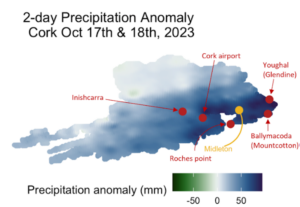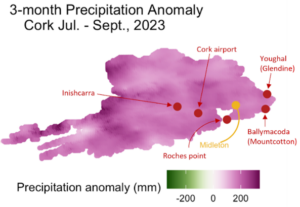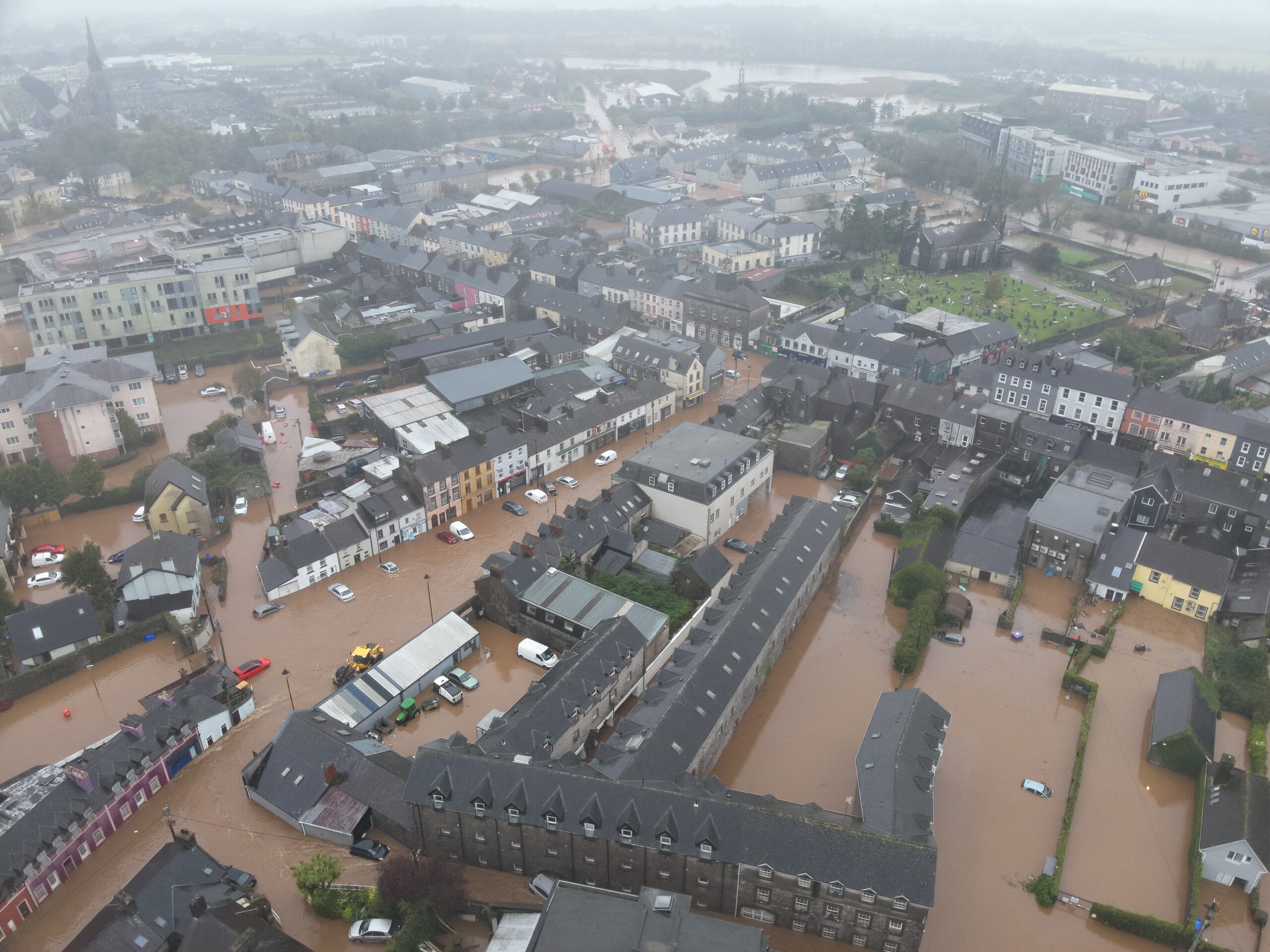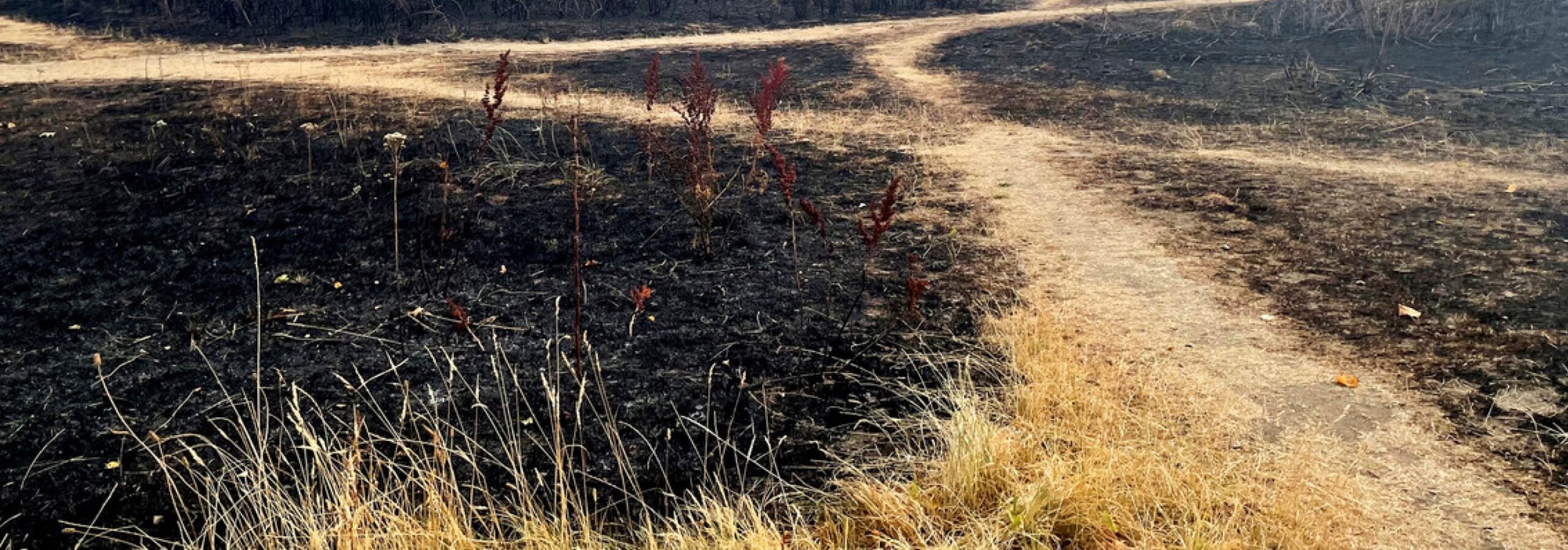The storm brought extreme rainfall to southwestern Ireland leading to extreme river levels. At least 400 homes and 300 businesses were flooded with damage totaling roughly €200 million. Had the high river levels not coincided with low tide, drainage into the harbour would have been much less effective, and the flooding would likely have been more severe.
To assess to what extent human-induced climate change altered the likelihood and intensity of the heavy precipitation that caused these impacts researchers from the World Weather Attribution initiative, Maynooth University and Met Éireann undertook an attribution study on the event.


We focused on two key indicators to allow us to differentiate the role of climate change in two important characteristics of the event: the 2-day extreme precipitation in October, and the 3-month total accumulated precipitation from July – September, both averaged over County Cork.
Main findings
- On the 17th and 18th October 2023, Storm Babet brought record rainfall amounts to the south of Ireland leading to significant flooding, with the town of Midleton, County Cork severely impacted. The intense 2-day rainfall fell on soils saturated by over 3 months of above average rainfall.
- Peak river flows coincided with a spring low tide, meaning that the river was able to efficiently drain into the sea. Had the event occurred at high tide and/or with substantial storm surge, flooding could have been much more extensive.
- From hydrological modelling, we find that high river flows in October upstream of Midleton are principally driven by extreme rainfall over 2-days and above average preceding rainfall over a longer period (leading to soil saturation), with little evidence of a significant contribution from recent land use changes.
- In order to assess whether and to what extent human-induced climate change was a driver of the rainfall leading to this flood we combine observations-based data products and climate models to look at both the extreme 2-day October and 3-month July-September accumulations over County Cork.
- We find that 2-day October rainfall at least as high as occurred on 17-18th October 2023 has more than doubled in likelihood and increased in intensity by around 13% due to global warming since pre-industrial levels. This result has high confidence with agreement between models and observations. At 2 degrees of warming, there is also high confidence of further increases in the likelihood and intensity of such events. However, these projected changes are challenging to quantify due to model uncertainties, and so the reported results of a 20% increase in likelihood and 2% in intensity have low confidence.
- On the other hand, the observed high antecedent rainfall from July-September may have become less likely by about 25% and the rainfall totals have reduced by around 5%. However, this result has very low confidence due to high uncertainties across all datasets and the disagreement in the direction of change between models (drying) and observations (wetting).
- In summary, forensic analysis of the drivers of flooding in Midleton show that changes in extreme rainfall due to anthropogenic climate change drove more intense flooding in October 2023, and such changes are likely to continue with further warming. Despite the substantial damages, Midleton proverbially ‘dodged a bullet’ of a far worse disaster thanks to the chance spring low tide at the time of the peak river flow.





